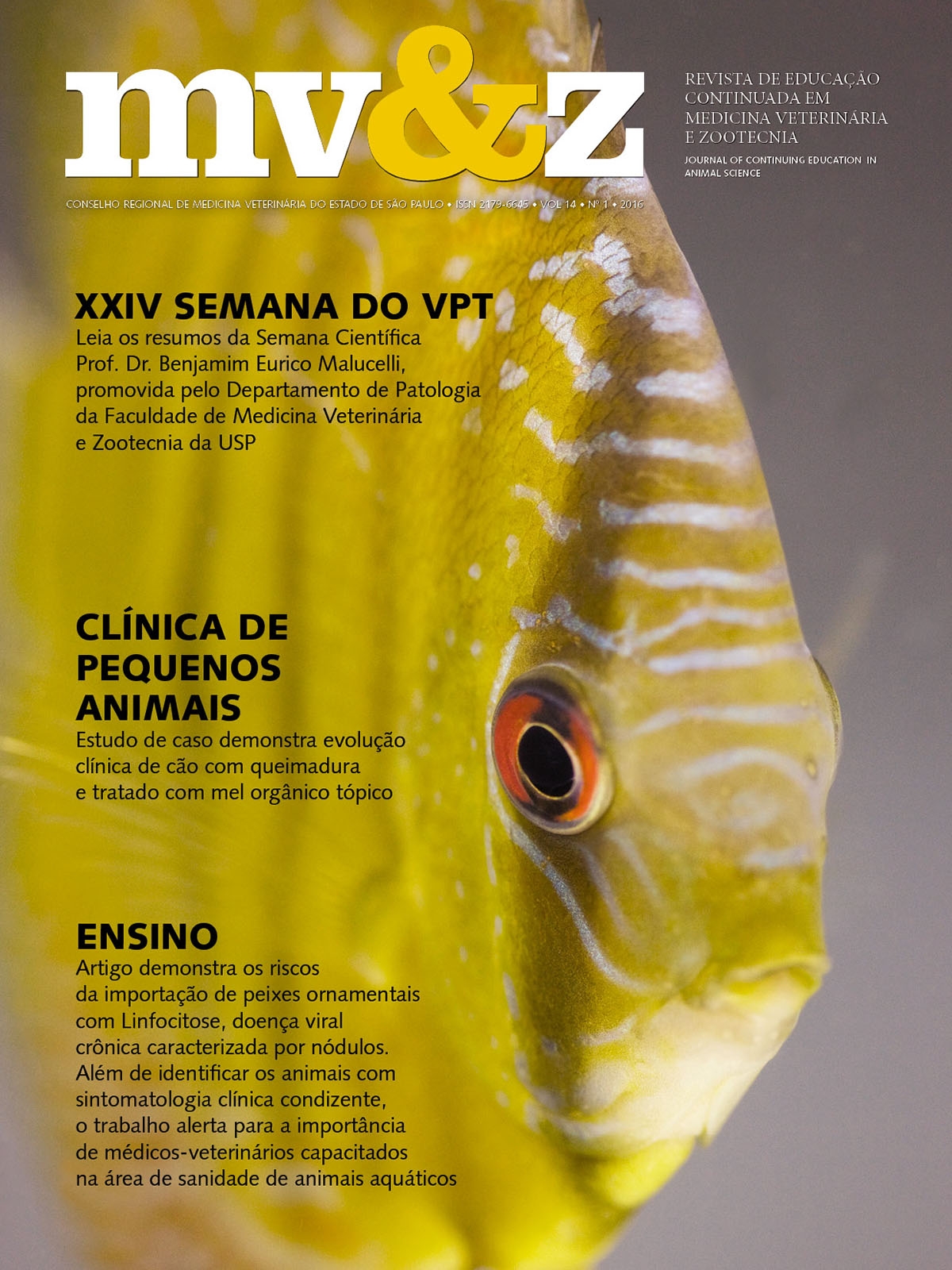Lymphocystis virus in ornamental fish imported in Brazil
Main Article Content
Abstract
Lymphocystis is a chronic viral disease found in both fresh and marine water fishes, characterized by nodules that typically appear on the skin or fins. Lymphocystis is the most common viral infection of ornamental fish. This study aimed to identify fish showing clinical signs of Lymphocystis virus in an ornamental fish importation company and to highlight the importance of involving veterinary doctors to assure the health of ornamental fish, a relatively unexplored practice in Brazil. Seventeen ornamental fishes studied during quarantine presented with clinical signs of the disease, confirmed after microscopic analysis. Every single fish presented with enlarged fibroblastic cells typical of the Lymphocystis virus. In this case, lesions were removed with a scalpel blade and the fish were treated with an antibiotic in a hospital aquarium for seven days. Thirty days later, the fish were healthy and ready for sale. The study also reinforces the fact that it is extremely important to provide the staff with examples of good practices in handling fishes, provide the technical team with professional training, and avoid situations of stress on fishes in order to restrain opportunistic diseases. The enablement of veterinary doctors in establishments that trade aquatic ornamental fishes is also essential to allow them to perform their work in prevention and disease control.
Article Details
1. Autores mantém os direitos autorais e concedem à revista o direito de primeira publicação, com o trabalho licenciado sob a Creative Commons Atribuição-NãoComercial-SemDerivações 4.0 Internacional
2. Autores têm autorização para assumir contratos adicionais separadamente, para distribuição não-exclusica da versão do trabalho publicada nesta revista (ex.: publicar em repositório institucional ou como capítulo de livro), com reconhecimento de autoria e publicação inicial nesta revista.
3. Autores têm permissão e são estimulados a publicar e distribuir seu trabalho online (ex.: em repositórios instituicionais ou na sua página pessoal) a qualquer ponto antes ou durante o processo editorial, já que isso pode gerar alterações produtivas, bem como aumentar o impacto e a citação do trabalho publicado (Veja O Efeito do Acesso Livre);
